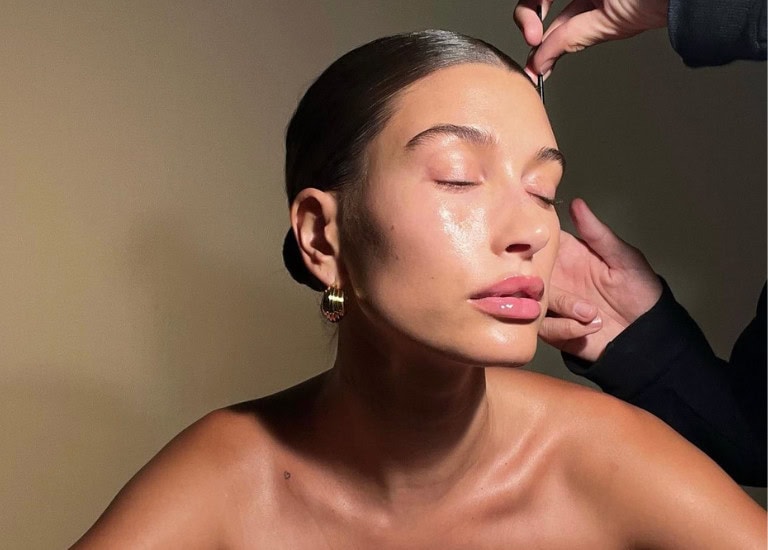Everything You Need To Know About The Latest Trend Called Skin Cycling

What is skin cycling?
If you’re someone who uses the internet to learn about current trends in skincare and wellness, then it’s quite possible that you’ve heard of a recent trend called “skin cycling.” As with many popularized skincare treatments and practices, skin cycling gained renown on TikTok, with close to 2 million views on videos discussing the topic. This trend is all the rage, but you haven’t seen these videos or you’re just looking for more clarification, then keep reading.
So, what is it? The idea behind skin cycling is that our skincare products are intended for different concerns rather than universal use, and that we should design a routine that rotates between treatments. By alternating the use of our products, you can better target the habits of your specific skin type and make sure that the items you use are having the most successful effect.
Why is It helpful?
To better understand the benefits of skin cycling, we can take a step back and consider what we are putting on our faces. Many of us have a skincare routine that involves a number of treatments, from serums to exfoliators to creams. By practicing skin cycling, we can prevent ourselves from overusing any one product or treating our skin too harshly.
Unlike other former skincare trends that have blown up on social media, skin cycling seems to be a legitimate dermatological practice. Many dermatologists have chimed in online to support adopting a skin cycling system. They say that this routine will allow a person to receive the optimal benefits from each product that they use. Additionally, it can help to prevent breakouts caused by too many layers of treatments.
What does the process of skin cycling entail?
At its core, skin cycling just refers to the spacing out of treatments and the creation of a thoughtful skincare regimen. However, there are certain systems that are recommended by dermatologists and estheticians. The most popular structure is to follow a four-day plan, which involves using “active” treatments for two nights and then hydrating and repairing products for the next two nights.
For example, this could involve an exfoliator one night, a retinoid the next (ideally an organic retinol serum), followed by two nights of hyaluronic acid and antioxidant moisturizer of your choice (check out our best selling Vitamin C serum). Whatever treatments you use should be able to fit within this structure.
You may notice that this four-day cycle only mentions changing up your nighttime routine. The majority of acne treatments are most effective at night, as they can sink into your skin while you sleep without being impacted by your outside environment.
During the day, it’s typically a good idea to stick to a cleanser, antioxidant, and sun protectant. An organic Vitamin C Serum is a wonderful idea to give your skin plenty of antioxidants and a healthy glow. If you are someone who uses more deliberate treatments in the morning, feel free to implement a cycle for these, too.
Although the four-day cycle is popular among dermatologists and estheticians, you can create your own plan as you wish. Skincare is an entirely individualized concept and you should always structure it based on what works best for you.

Who is skin cycling good for?
If implemented correctly, skin cycling can really benefit anyone. By spacing out the use of products, people with any skin type can receive better benefits from their skincare routine. However, the products that you use and the frequency with which you use them will depend on your specific skincare needs.
As with most treatments, people with sensitive skin need to be more careful when trying out skin cycling. If your skin is more sensitive to new products or changes in treatments, you will need to be cautious with adjustments in order to avoid breakouts or irritation. However, when it comes to the use of certain products, skin cycling can actually be a more gentle approach for those with sensitive skin. For example, retinol treatments can often cause irritation, dryness, and breakouts due to skin purging or tretinoin purge. A skin cycling approach would involve only using the retinoid one (or maybe two) nights of the week, allowing for more time to recovery while still benefitting your skin overall.
It’s not only those with sensitive skin who can benefit from skin cycling. By designating nights for harsher treatments and then providing time for the skin to repair and be hydrated, people with both dry and oily skin can benefit from skin cycling. The exact routine that you follow will differ based on your individual skin story, yet this system can truly be helpful for any person.
Is It a good idea for me?
So, is skin cycling a good idea for me? Well, the answer is probably yes. If you are someone who uses a variety of treatments on your skin, or even just one treatment, then it’s likely that you stand to benefit from the implementation of a skin cycle. However, there are some people who just prefer to stick to cleanser (especially cleansing oil) and moisturizer. As long as the products that you use are working for you, there is no pressure to switch up your routine.
Although skin cycling can be quite beneficial for people with sensitive skin, there is a chance that your skin may become irritated once beginning skin cycling. As with any new treatment, there is always a risk that our skin may react negatively, and breakouts or irritation may occur. However, it’s important to wait a week or two before swearing off skin cycling, as your skin just may need a moment to adjust. For some people with deeply sensitive skin, it might just be preferable to do the same thing every day, as switching up your products just causes too much irritation. There are many possible outcomes, but there is really no harm caused by attempting skin cycling and seeing if it works for you.
Will skin cycling cost me extra money?
One benefit of skin cycling is that unlike the multitude of other skincare trends floating around the internet, it does not cost extra money! Not only that, but skin cycling is actually likely to save you money in the long-term. By only using more costly products such as retinol serums, niacinamide, and tazarotene one or two days out of the week, you will save a solid amount of money on product. In general, skin cycling will cause your products to run out less frequently. By using less product but applying it more intentionally, you will save money on skincare, which we all know can be quite an expensive hobby.
So, is skin cycling worth it?
The philosophy behind the process of skin cycling is simple– we should all slow down a bit and consider what the purpose of all these products we’re using is. After all, it’s easy to scroll through TikTok and see video after video of people swearing by a new product or treatment. Oftentimes, these “life hacks” do work, but it’s essential to be selective about what products we add to our skincare regimens. After all, we each have our own individual skin type and skin journeys and there is no one-size-fits-all approach.
For this reason, skin cycling is absolutely a good process to try out, at least just as a new way of thinking about skincare. By breaking up the use of our products and really focusing on what benefits they are each supposed to deliver, we can ensure that we are getting the most bang for our buck with each product that we use.
Medical Disclaimer:
This content is for informational and educational purposes only. It is not intended to provide medical advice or to take the place of such advice or treatment from a personal physician. All readers of this content are advised to consult their doctors or qualified health professionals regarding specific health questions. The publisher of this content does not take responsibility for possible health consequences of any person or persons reading or following the information in this educational content. All viewers of this content, especially those taking prescription or over-the-counter medications, should consult their physicians before beginning any nutrition, supplement, skincare product, or lifestyle program.
